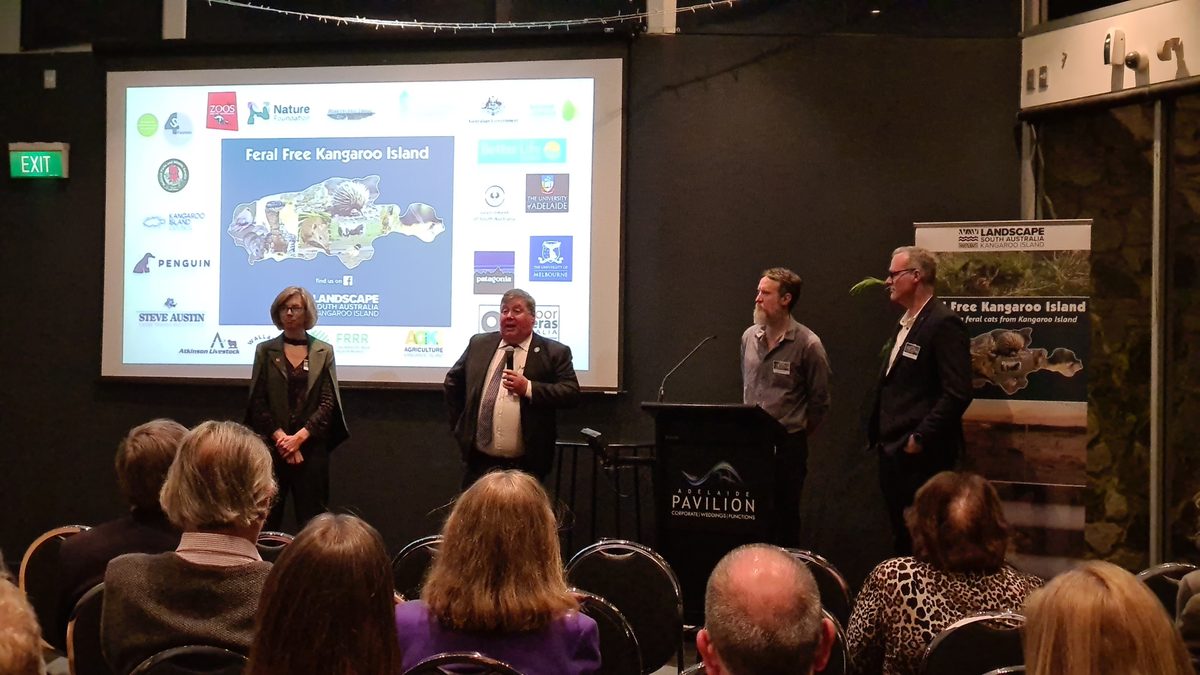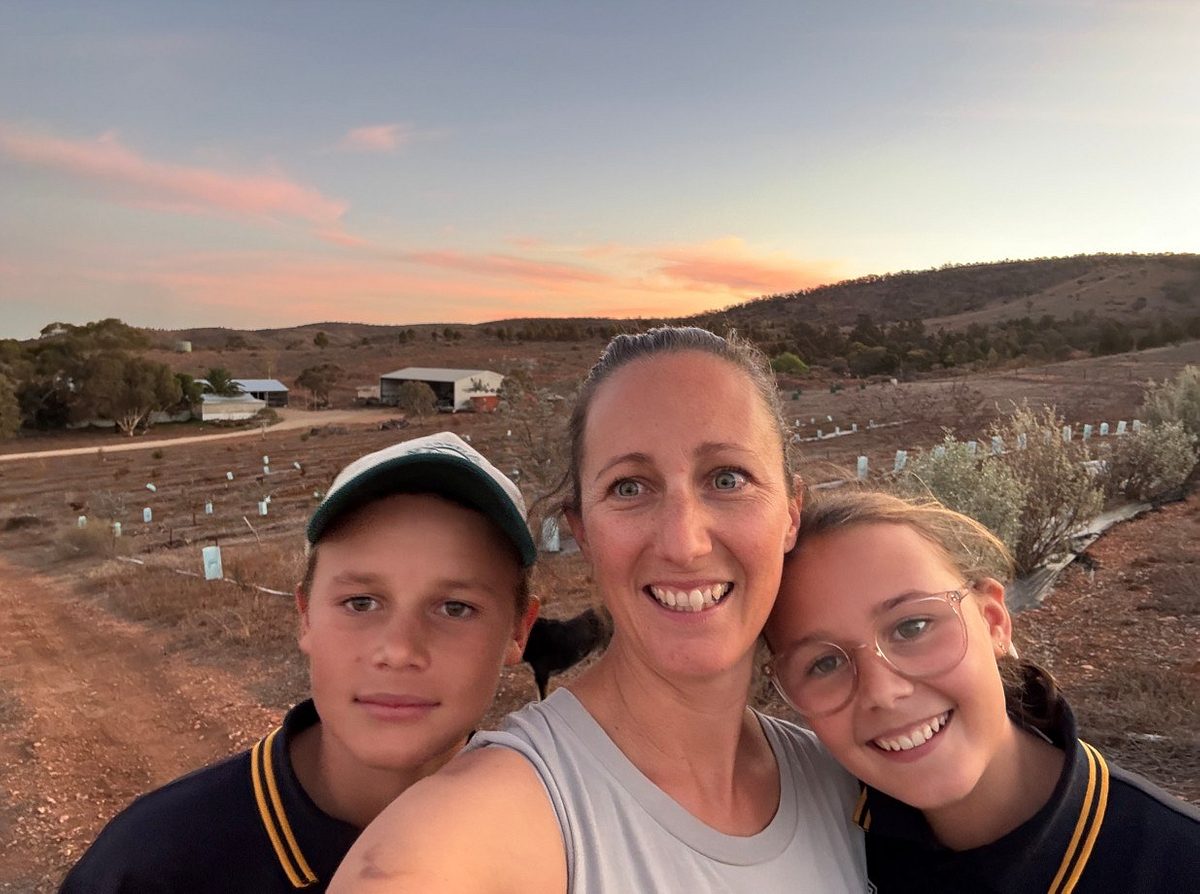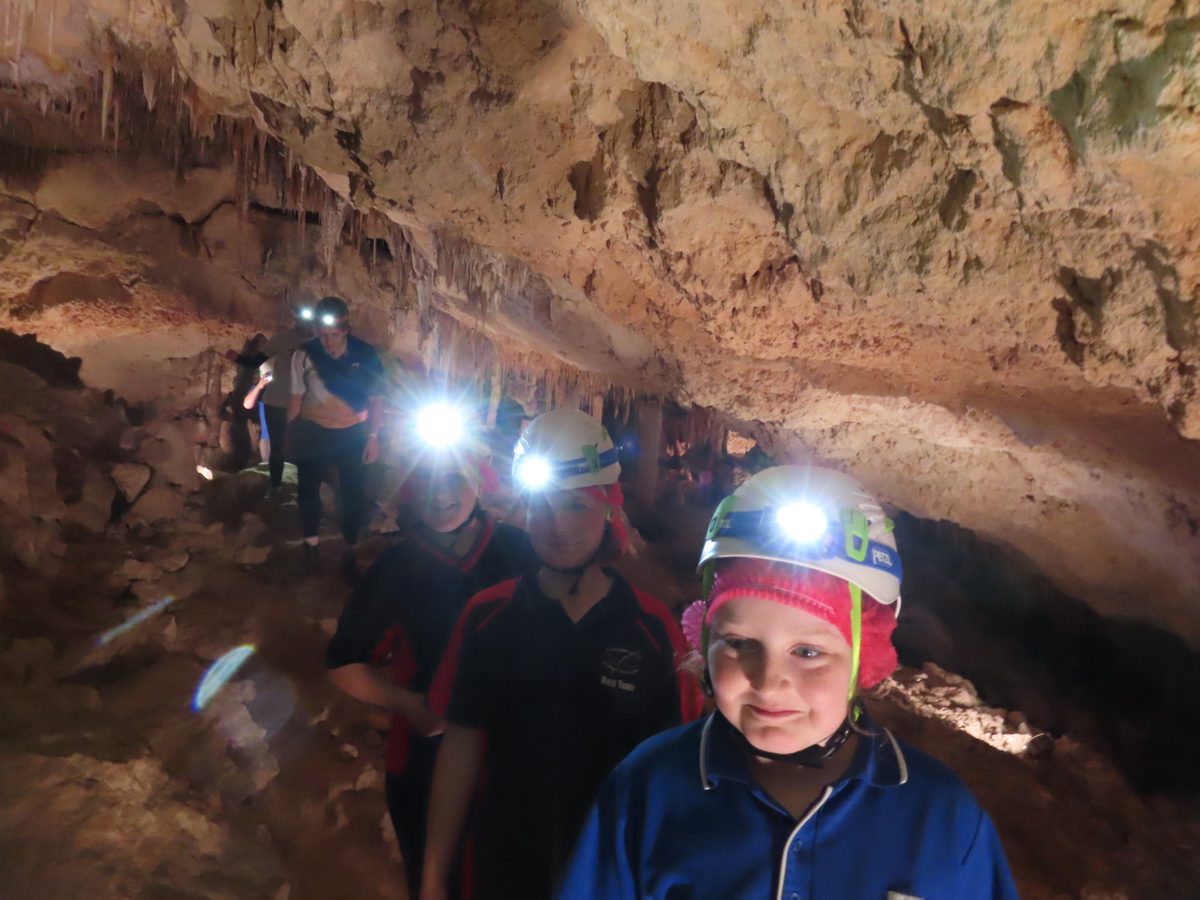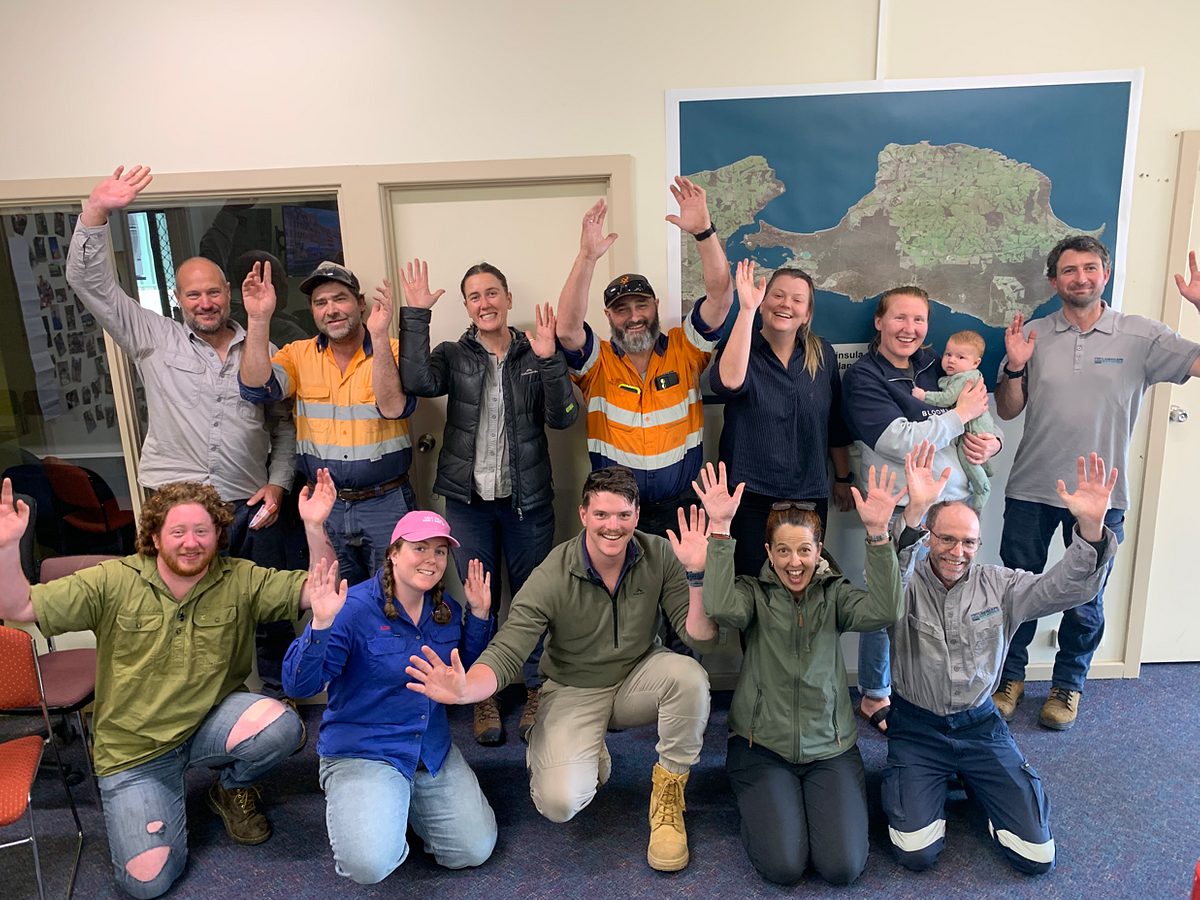Towards A Living Ark - KI Landscape Board’s Adelaide Showcase on Feral Cat Eradication
A Feral Cat Eradication Showcase was hosted by the Kangaroo Island Landscape Board with its partner Nature Foundation at Adelaide Pavilion on 11th of October 2022. The ‘Kangaroo Island - Towards A Living Ark’ fundraising and showcase event demonstrated the incredible work that has been achieved, and is continually being achieved, by the Kangaroo Island Landscape Board, with an ambitious goal of eradicating feral cats from the Dudley Peninsula by 2025.

A Feral Cat Eradication Showcase was hosted by the Kangaroo Island Landscape Board (KILB) with its partner Nature Foundation at Adelaide Pavilion on 11th of October 2022. The ‘Kangaroo Island - Towards A Living Ark’ fundraising and showcase event demonstrated the incredible work that has been achieved, and is continually being achieved, by the KILB, with an ambitious goal of eradicating feral cats from the Dudley Peninsula by 2025.
The event was emceed by Kangaroo Island Landscape Board’s Invasive Species Manager, Dr Bronwyn Fancourt, and attended by a full house of participants.
After an impressive Welcome to Country, the Honourable Leon Bignell MP, State Member for Mawson, recapped the remarkable work already accomplished towards making Kangaroo Island a feral free ‘living ark’. Having recently eradicated feral goats and deer, feral pigs on track to be eradicated by mid-2023, and with Kangaroo Island being free of rabbits and foxes, the Kangaroo Island Landscape Board now have feral cats in their sights. ’More than 100 islands have successfully eradicated cats…, and we hope that Australia’s third largest island, Kangaroo Island, can join that club. Because not only is it great for biodiversity, is it great for our environment, but it is also extremely important for the biggest industry on Kangaroo Island and that is the agricultural sector’.
Threatened Species Commissioner, Dr Fiona Fraser, said ‘the timing [of this event] is really great as it comes hot off the heels of the Australian Government’s launch of the new Threatened Species Action Plan. This new Action Plan is important for Kangaroo Island because it reaffirms KI as a place of global and national ecological importance.’
‘Getting rid of feral cats anywhere is enormously difficult and is very expensive… but the long-term benefits of achieving true eradication in a high-biodiverse landscape such as Kangaroo Island is worth its effort in spades, and will really guarantee recovery of many threatened species and the long-term resilience of those populations. This project is quite ambitious but has all the right ingredients for success’ Dr Fraser said.
‘Eradication of feral cats on the Dudley Peninsula will bring lasting and dramatic biodiversity and economic outcomes for that part of Kangaroo Island, and will be a critical step in embarking on island wide eradication, which would be a truly global achievement.’
Professor Chris Daniels, Champion for A Feral Free Kangaroo Island, highlighted the importance of islands to our ecosystem, with a focus on the unique and threatened fauna that call Kangaroo Island home.
‘There’s a huge swag of animals that are critically endangered, most famously the Kangaroo
Island dunnart and the glossy black-cockatoo…bassian thrushes, western whipbirds - the list is depressingly long that are really at threat on Kangaroo Island.’
‘If we can deal with cats, then the island has a great hope, for its own sake, for the social and economic fabric of the community, and as a potential space for other reintroductions into the future.’
Dr James Smith, Project Leader for the Kangaroo Island Landscape Board’s Feral Cat Eradication Program, provided an overview of the eradication’s progress to date and future directions for the program.
Dr Smith highlighted the significantly higher abundance of feral cats on Kangaroo Island, which is 10 times higher than the adjacent mainland. He explained that not only do feral cats depredate wildlife, but that they also spread diseases to wildlife and livestock. 89% of feral cats on KI carry the Toxoplasma gondii parasite, and just one cat can shed enough parasitic oocysts in two weeks to infect millions of sheep and wildlife. The oocysts can remain infectious in the environment for more than 18 months under KI conditions.
Toxoplasmosis is fatal to many native animals and can have severe impacts on human health, and can cause abortions, still births and neonatal death in sheep. Diseases spread by feral cats are estimated to cost KI farmers millions of dollars in productivity and economic losses annually. ‘The community on KI is well and truly behind us.’ Dr Smith said. ‘That’s because all sectors of the community – the farming community, the conservation community, can see the reasons for getting rid of feral cats.’
Dr Smith explained how advanced technologies are helping to find every last feral cat in a challenging and extensive landscape. Feral cats are small, fast, cryptic and leave very little trace in the landscape. However, an extensive network of solar-powered, 4G connected cameras coupled with artificial intelligence has helped to instantly detect and identify feral cats, yielding significant time and cost savings. ‘We have partnered with our project partners at eVorta, and to date their computer has sorted about 4 million images for us’ Dr Smith said. With the continued use and development of cutting-edge technology, Dr Smith indicated how the Kangaroo Island Landscape Board anticipate the bulk of Dudley Peninsula eradication done by mid-2024 and full eradication by 2025.
Dr. Bronwyn Fancourt reflected on the progress of the feral cat eradication program. ‘Quite a few people have said it can’t be done, but not only can it be done, it is being done. The on-ground work is already delivering tangible benefits for biodiversity, for human health, and for agriculture.’
The KILB is calling for support and donations to help the project achieve its goal of full eradication of feral cats on the Dudley Peninsula by 2025. To know more or support the Feral Cat Eradication program, please refer to the links below or contact Dr James Smith via ki.landscapeboard@sa.gov.au or 08 8553 2476.
Links to keynote speeches of the Showcase:
Hon Leon Bignell, MP of the SA Parliament (Mawson)
Dr Fiona Fraser, Threatened Species Commissioner
Professor Chris Daniels, Presiding Member of Green Adelaide and Champion for a Feral Free Kangaroo Island
Dr James Smith, Project Leader, Feral Cat Eradication Program, KILB






